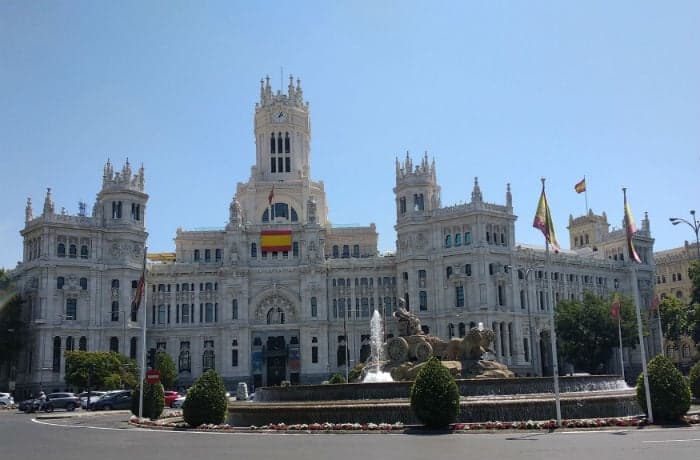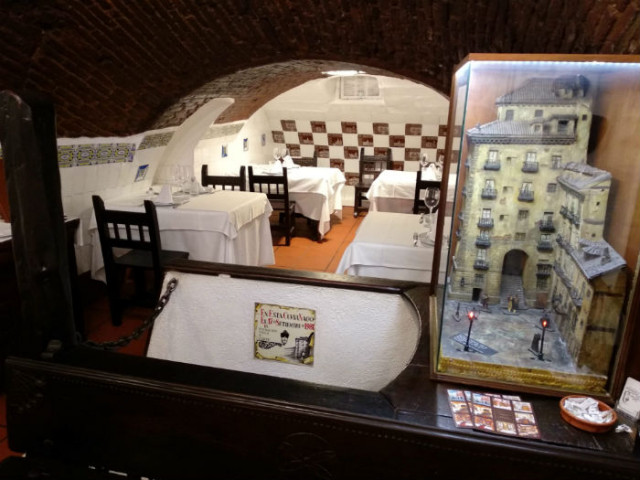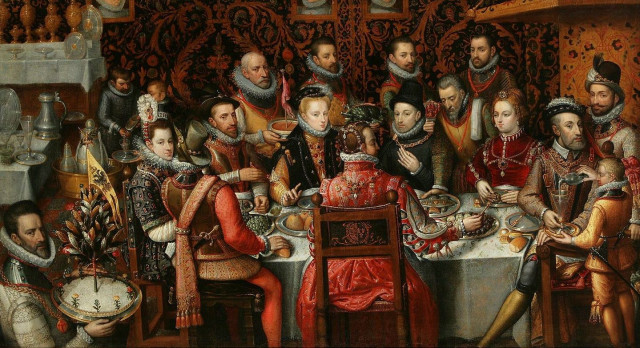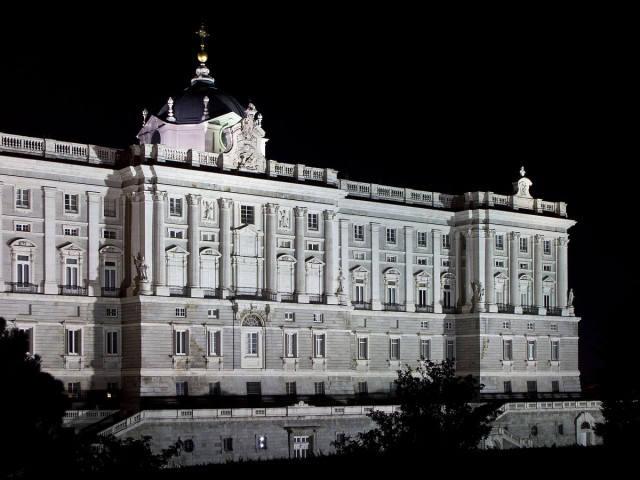Going underground: Discovering Madrid's secret tunnels

Long before your average citizen started whizzing about en masse underground, a series of secret tunnels and caves ran below the streets of central Madrid. Perfect for flitting through the city incognito, back in the day, this underground network was used by criminals and even kings.
While the subject is, by its very nature, shrouded in mystery, the following is an attempt to shine some light into these clandestine spaces:
Den of Thieves
It’s November 6 1837 and a huge crowd has gathered to watch Luis Candelas be put to death. A Robin Hood figure of sorts, the cheeky manolo from Lavapiés has, to the public’s delight, led the police a pretty dance, getting away with 40 or more robberies and holdups, always managing to slip out of their clutches at the very last moment – disappearing, it seems, into thin air.
So just how did he do it? The answer lies in a network of caves running beneath the pavement at the south-western end of Plaza Mayor. After a robbery, Candelas and his gang would escape with their loot to a hideout at the back of a fabric shop that stood under the Arco de Cuchilleros (arch of the knifemakers).

These days the famous restaurant Los Cuevas de Luis Candelas is located in these caves and you can easily visit for the price of a meal. But if you find the bill too steep, you won’t be able to do a Candelas-style runner as the passages that used to connect the caves to others under the square were demolished to make way for an underground car park!
It’s a shame they’re gone because we have little chance now to clarify exactly why they were built in the first place. There are many conflicting theories: some say that they were part of the moat that ran down Cava de San Miguel (formally the old medieval wall to the city), others that they were mines or part of a network of underground canals that had been created when the city was part of Al-Andalus. As this last theory not only appeals to the imagination, but also ties in neatly with rumours of other tunnels, it’s worth exploring...
Underground Network of Waterways
The Arabic name for Madrid was Mayrit, or place of abundant waters and its plentiful underground springs were one of the main reasons Muhammad I of Cordoba chose to construct an outpost here in the late ninth century. Al-Andalus was renowned in medieval Europe for its innovations not only in mathematics, but also in hydro engineering.
To harness the city’s water supply, hundreds of wells were dug during this period and it seems likely, though sadly not verifiable, that underground waterways were also constructed.
In time, as the city’s population grew, wells around the city dried up and it’s not beyond the realms of possibility that the shells of underground channels too might have been left behind.
Spaces that could be widened or lengthened to suit. If they existed, it stands to reason that the majority of these would have been concentrated under the Alcazar, a fortress that overlooked the no man’s land lying between Madrid and the mountains to the north.
Royal Back Passages
When Philip II chose Madrid as the Spanish capital in 1561 the Alcazar was converted into the royal palace. A center of power that was known to sit at the nexus of a set of long tunnels that connected it to places as distant as the Plaza de la Paja and certain religious institutions in Barrio de las Letras!

The court of Felipe II by Alonso Sánchez Coello in the Museo del Prado.
If this wasn’t enough, a further underground passage was built in the 17th century running between the Royal Alcazar and the adjacent Royal Convent of La Encarnación. At first, the purpose of this tunnel seemed completely wholesome. A grand affair, decorated with works of art, it allowed the royal family to attend mass without having to step out amongst the hoi polloi.
However, when Philip IV came to the throne, rumours spread that the king was travelling down a flooded section by gondola to visit a lover he’d housed among the nuns. While this might sound a little far-fetched, bear in mind that during his rule, a young nun from another convent had been driven to fake her own death in order to avoid his unwanted attentions!
Up in Smoke
Though sections of one passage are still said to exist beneath Plaza de la Paja, most of these tunnels were destroyed when the Alcazar burned down in 1734, with the final blow being dealt when Napoleon installed his brother, Joseph Bonaparte, on the throne.
As part of a modernizing policy, Joseph had many of the city’s churches bulldozed to create some of the Madrid’s most famous squares and during this work, the king’s tunnel to the convent that ran under the Plaza de Oriente was destroyed.
But that wasn’t the end of secret tunnels leading from the palace. Joseph, facing a populace that hated his guts, realized that he might need to make a swift getaway, so he had a brand- new escape tunnel constructed from the palace under the Manzanares to the Palacete de los Vargos in Casa de Campo where he was thought to have installed his lover.

Photo of the Royal Palace at night. By Carlos Delgado; CC-BY-SA
Creeping up on the Enemy
While Joseph Bonaparte’s tunnel is now cut in two by the M30, it came in handy during the siege of Madrid for Republican troops who used it to transport arms to Casa de Campo. After the frontline shifted to University City, the defending army built tunnels to cross the front lines, sometimes with the sole purpose of leaving a deadly charge at the end.
When the bombardment of Madrid by German troops made it clear that the Republican government was under threat, huge bunkers were built out in the Parque de Capricho and under Cibeles fountain. The bunker under the fountain being particularly interesting because it was connected to three tunnels, one of which led directly into Palacio de Buenavista which was then the Ministry of War and is now the Army Headquarters.
Happily, Madrid has now transitioned into a more peaceful epoch with this violent conflict gradually passing out of living memory. Sadly though, this also means that secret passageways are pretty much a thing of the past. Or are they? Please leave a comment below if you’ve heard of any other untoward underground activity.
Felicity Hughes is the author of The Making of Madrid, a blog about the history of the city. She holds regular tours via Meetup and is happy to run private tours too. Follow her on Facebook and Twitter.
Comments
See Also
While the subject is, by its very nature, shrouded in mystery, the following is an attempt to shine some light into these clandestine spaces:
Den of Thieves
It’s November 6 1837 and a huge crowd has gathered to watch Luis Candelas be put to death. A Robin Hood figure of sorts, the cheeky manolo from Lavapiés has, to the public’s delight, led the police a pretty dance, getting away with 40 or more robberies and holdups, always managing to slip out of their clutches at the very last moment – disappearing, it seems, into thin air.
So just how did he do it? The answer lies in a network of caves running beneath the pavement at the south-western end of Plaza Mayor. After a robbery, Candelas and his gang would escape with their loot to a hideout at the back of a fabric shop that stood under the Arco de Cuchilleros (arch of the knifemakers).

These days the famous restaurant Los Cuevas de Luis Candelas is located in these caves and you can easily visit for the price of a meal. But if you find the bill too steep, you won’t be able to do a Candelas-style runner as the passages that used to connect the caves to others under the square were demolished to make way for an underground car park!
It’s a shame they’re gone because we have little chance now to clarify exactly why they were built in the first place. There are many conflicting theories: some say that they were part of the moat that ran down Cava de San Miguel (formally the old medieval wall to the city), others that they were mines or part of a network of underground canals that had been created when the city was part of Al-Andalus. As this last theory not only appeals to the imagination, but also ties in neatly with rumours of other tunnels, it’s worth exploring...
Underground Network of Waterways
The Arabic name for Madrid was Mayrit, or place of abundant waters and its plentiful underground springs were one of the main reasons Muhammad I of Cordoba chose to construct an outpost here in the late ninth century. Al-Andalus was renowned in medieval Europe for its innovations not only in mathematics, but also in hydro engineering.
To harness the city’s water supply, hundreds of wells were dug during this period and it seems likely, though sadly not verifiable, that underground waterways were also constructed.
In time, as the city’s population grew, wells around the city dried up and it’s not beyond the realms of possibility that the shells of underground channels too might have been left behind.
Spaces that could be widened or lengthened to suit. If they existed, it stands to reason that the majority of these would have been concentrated under the Alcazar, a fortress that overlooked the no man’s land lying between Madrid and the mountains to the north.
Royal Back Passages
When Philip II chose Madrid as the Spanish capital in 1561 the Alcazar was converted into the royal palace. A center of power that was known to sit at the nexus of a set of long tunnels that connected it to places as distant as the Plaza de la Paja and certain religious institutions in Barrio de las Letras!

The court of Felipe II by Alonso Sánchez Coello in the Museo del Prado.
If this wasn’t enough, a further underground passage was built in the 17th century running between the Royal Alcazar and the adjacent Royal Convent of La Encarnación. At first, the purpose of this tunnel seemed completely wholesome. A grand affair, decorated with works of art, it allowed the royal family to attend mass without having to step out amongst the hoi polloi.
However, when Philip IV came to the throne, rumours spread that the king was travelling down a flooded section by gondola to visit a lover he’d housed among the nuns. While this might sound a little far-fetched, bear in mind that during his rule, a young nun from another convent had been driven to fake her own death in order to avoid his unwanted attentions!
Up in Smoke
Though sections of one passage are still said to exist beneath Plaza de la Paja, most of these tunnels were destroyed when the Alcazar burned down in 1734, with the final blow being dealt when Napoleon installed his brother, Joseph Bonaparte, on the throne.
As part of a modernizing policy, Joseph had many of the city’s churches bulldozed to create some of the Madrid’s most famous squares and during this work, the king’s tunnel to the convent that ran under the Plaza de Oriente was destroyed.
But that wasn’t the end of secret tunnels leading from the palace. Joseph, facing a populace that hated his guts, realized that he might need to make a swift getaway, so he had a brand- new escape tunnel constructed from the palace under the Manzanares to the Palacete de los Vargos in Casa de Campo where he was thought to have installed his lover.

Photo of the Royal Palace at night. By Carlos Delgado; CC-BY-SA
Creeping up on the Enemy
While Joseph Bonaparte’s tunnel is now cut in two by the M30, it came in handy during the siege of Madrid for Republican troops who used it to transport arms to Casa de Campo. After the frontline shifted to University City, the defending army built tunnels to cross the front lines, sometimes with the sole purpose of leaving a deadly charge at the end.
When the bombardment of Madrid by German troops made it clear that the Republican government was under threat, huge bunkers were built out in the Parque de Capricho and under Cibeles fountain. The bunker under the fountain being particularly interesting because it was connected to three tunnels, one of which led directly into Palacio de Buenavista which was then the Ministry of War and is now the Army Headquarters.
Happily, Madrid has now transitioned into a more peaceful epoch with this violent conflict gradually passing out of living memory. Sadly though, this also means that secret passageways are pretty much a thing of the past. Or are they? Please leave a comment below if you’ve heard of any other untoward underground activity.
Felicity Hughes is the author of The Making of Madrid, a blog about the history of the city. She holds regular tours via Meetup and is happy to run private tours too. Follow her on Facebook and Twitter.
Join the conversation in our comments section below. Share your own views and experience and if you have a question or suggestion for our journalists then email us at [email protected].
Please keep comments civil, constructive and on topic – and make sure to read our terms of use before getting involved.
Please log in here to leave a comment.